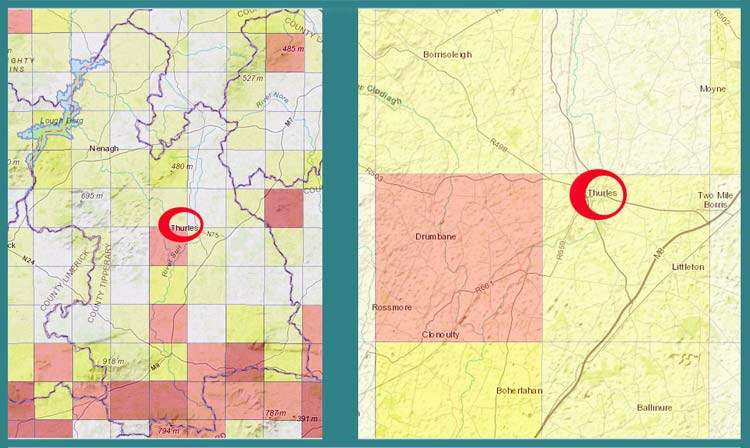What is Radon?
Radon is a radioactive gas formed in the ground, brought about by radioactive decay of uranium, latter present in all rocks and soils.
Outdoors, radon quickly dilutes to a harmless level, but when it enters an enclosed space, such as a house or other building, it can accumulate to unacceptably high levels. Radon is a lung carcinogen and is linked to some 300 lung cancer cases each year in Ireland, making it a serious public health hazard.
About one third of Ireland is classified as a high radon area by the EPA, however, the EPA recommends that homeowners in all areas test their homes for radon. Ireland has relatively high indoor radon levels, with an average indoor level of 77 Bq/m3, compared to the worldwide average of 39 Bq/m3.
EPA warns that failure to carry out remediation work, after testing high for radon gas, is a serious health risk.

- Radon gas is invisible, colourless and odourless – and causes around 300 cases of lung cancer in Ireland every year
- About 5,000 householders in Ireland have taken immediate action and have had their homes tested for radon, following Radon Awareness Campaigns in their area.
- One in 6 of these were found to have high radon levels
- Too many homeowners are putting their health at risk by not carrying out vital remediation work
On European Radon Day today, Thursday 7th November, the EPA is now calling on all householders, to take action to protect themselves and their families. In these homes, remedial action should be carried out as a matter of urgency to reduce exposure to radon.
Radon is second only to smoking as the leading cause of lung cancer. It is estimated that about 300 lung cancer cases each year in Ireland are linked to radon exposure. Reducing high radon levels will, over time, save lives.
Radon is easy to test for and easy to fix, so learning more about what it is, and how you can protect yourself is critical. The World Health Organisation has categorised radon as a Group 1 carcinogen, in the same group as asbestos and tobacco smoke.
Ms Stephanie Long, (Senior Scientist, Environmental Protection Agency) has stated: “Radon is invisible, colourless and odourless. It is present in all Irish homes and it is estimated that up to 500,000 people are living in homes with radon levels above the acceptable level of 200 Bq/m3. Many Irish homes still need to carry out a radon test or they could be completely unaware of the potential problem in their own home. Testing your home to identify if you have a problem is the first step.”
“Radon is only a problem if it is ignored. If there is a high radon level in your home, it is exposing you and your family to an unnecessary radiation dose. Radon is present in all homes however, levels can vary. Just because your neighbour’s home has been deemed safe from radon does not mean you are safe. If you haven’t already done so, we would urge you to protect your family’s health by carrying out remediation work as soon as possible”.
Reducing radon levels is simple and inexpensive and will immediately reduce the risk of developing lung cancer. For moderate levels of radon, improving indoor ventilation may reduce the level by up to half, the cost of which is low. For higher levels, a fan assisted ‘sump’ can be installed which can reduce radon levels by over 90%. The sump can be installed in a day by a contractor with little disruption to the home.
Give yourself and your family peace of mind in the knowledge that your home is safe. For more information and to find a list of registered radon remediation services visit HERE.

Leave a Reply